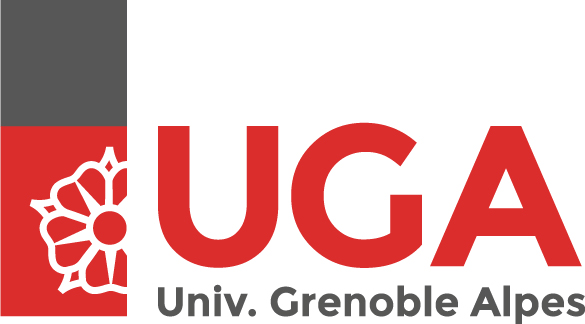This years program concerns Geometry, Topology and Dynamical Systems. There are important links between these fields, as an example one can cite the importance of gemetrical and topological methods in the study of dynamical systems. The courses will cover real and complex differential geometry, their link to partial differential equations, topology and dynamical systems. In particular we propose introductory courses to complex analysis in several variables, complex geometry and metric geometry (for instance metric hyperbolicity in the sense of Gromov), (pseudo-)Riemannian geometry (and its link to mathematical general relativity) and algebraic topology. The more advanced lectures deal with knot theory, topology in low dimensions and dynamical systems in dimension 3.
Introductive courses
Algebraic Topology (Jean Fasel and Rémi Molinier)
This course provides an introduction to both homotopy and homology theories, fundamental elements in algebraic topology. Algebraic topology bridges the gap between topology (or geometry) and algebra, the basic idea being to distinguish topological objects by associating to them algebraic invariants (integers, groups, rings, modules, etc.).
The beginning of the course will cover essential concepts of homotopy theory, as well as the fundamental group. We will then focus on covering spaces, highlighting their nice behavior with respect to properties like lifting, before passing to Galois theory of coverings. The rest of the course will concentrate on homology theories, a framework allowing accessible and explicit calculations. This will also provide a more general overview of what homological algebra is, a concept found in various fields beyond algebraic topology (group theory, representation theory, algebraic geometry, algebraic number theory, differential geometry, etc.).
This course serves as an essential prerequisite for the advanced course dedicated to knot theory and low-dimensional topology.
Prerequisites
-Basic notions in algebra and topology, corresponding roughly to undergraduate studies in mathematics.
-Basic notions in category theory (e.g. corresponding to the first chapter of Category for the working mathematician).
Tentative organization
1. Preamble (possibly under the form of exercises) : varieties and cellular complexes
2. Homotopy theory and fundamental group
-Connectedness and homotopies
-Fundamental group
-Van Kampen Theorem
3. Covering spaces
-Definition and lifts
-Action of the fundamental group on coverings
-Universal coverings
-Galois theory of covering spaces
4. Homologie
-Simplicial and singular homologies
-Homology of pairs and the associated long exact sequence
-Excision and homology theories
-Mayer-Vietoris exact sequence
References
-Allen Hatcher, Algebraic Topology
-Joseph J. Rotman, An Introduction to Algebraic Topology
-http://analysis-situs.math.cnrs.fr
Pseudo-Riemannian Geometry (Dietrich Häfner and Andrea Seppi)
Riemannian geometry finds its roots in the work of Riemann in the 19th century, who extended the differential geometry of surfaces in Euclidean space, such as the theory of curvature developed by Gauss, to submanifolds in higher-dimensional spaces. The notion of Riemannian manifold, which consists essentially in an n-dimensional space endowed with a scalar product on the tangent space at every point, was then further generalized to metrics of any signature, giving rise to the so-called pseudo-Riemannian geometry. The latter was used by Einstein to formulate his theory of general relativity, and plays a fundamental role in modern physics.
The aim of this course is to develop the basic notions of differentiable manifolds, introduce Riemannian and pseudo-Riemannian manifolds and study their geometric objects such as the geodesics, the connections, and the (various possible notions of) curvature. Then the last part of the course will focus on a class of pseudo-Riemannian manifolds, namely Lorentzian manifolds, explain their relations with general relativity, and study several examples of Lorentzian manifolds that represent solutions to Einstein's equations.
Program:
1. Manifolds: tangent space, vector bundles, tensors.
2. Riemannian geometry: geodesics, exponential map, lengths, distances, completeness
3. Pseudo-Riemannian manifolds and curvature: sectional, Ricci and scalar curvature, theory of submanifolds
4. Lorentzian geometry: causality, global hyperbolicity
5. Examples of Lorentzian manifolds: Minkowski, de Sitter and Anti-de Sitter geometry, Schwarzschild and Kerr black holes.
Prerequisites:
- Differential calculus in ${\mathbb R}^n$.
- Differential geometry of curves and surfaces
References:
[1] Lee, Introduction to smooth manifolds
[2] Lee, Riemannian manifolds: an introduction to curvature
[3] Petersen, Riemannian geometry
[4] O'Neill, Semi-Riemannian geometry with applications to relativity.
Complex differential geometry and invariant metrics (Hervé Gaussier and Pierre Py)
The purpose of this course is to give to master students a (biaised) panorama of complex differential geometry in several variables with a particular focus on the many natural metrics/distances that can be defined on complex manifolds.
We will first give an introduction to holomorphic functions of several variables and explain why these functions behave very differently compared to the case of one variable. For instance, we will learn why a holomorphic function defined on the unit ball of ${\mathbb C}^2$ minus the origin necessarily extends accross the origin to give a holomorphic function defined on the entire unit ball. We will also describe basic notions related to pseudoconvexity and domains of holomorphy.
Then we will turn to abstract complex manifolds. We will give basic definitions and present lots of examples of complex manifolds. We will then introduce K\"ahler metrics. These metrics on complex manifolds are a meeting ground for complex and Riemannian geometry. We will notably explain why a K\"ahler metric on a complex manifold is the same thing as a Hermitian metric for which the (Riemannian) parallel transport is complex linear. We will also describe several properties of the curvature tensor of K\"ahler manifolds.
Finally, in the last part of the course, we will introduce several metrics playing an important role in complex geometry (K\"ahler-Einstein metrics, Kobayashi metric, Bergman metric, among others). We will explain the relations between them and will study examples, both in the case of closed manifolds and in the case of complete open manifolds.
Program.
I. Complex manifolds : generalities and examples
II. Metrics on complex manifolds
II. 1. Some examples :
- Finsler metrics : Kobayashi metric, Carathéodory metric
- K\"ahler metrics : Bergman metric, Kähler-Einstein metric
II.2. Curvature tensor of Kähler metrics
III. Some properties of invariant metrics
III.1. Structure of the automorphism group
III.2. Asymptotic estimates in strongly pseudoconvex domains
III.3. (Curvature) characterization of the unit ball
Prerequisites
- Differential calculus in ${\mathbb R}^n$.
- Complex analysis in one variable.
References
[1] J.-P. Demailly, Complex analytic and differential geometry.
[2] J.-E. Fornaess and B.~Stensones, Lectures on Counterexamples in Several Complex Variables.
[3] S. Kobayashi, Hyperbolic complex spaces.
[4] S. Krantz, Function Theory of Several Complex Variables (2nd ed., American Mathematical Society, 2001).
Advanced courses
3D flows and their sections (Ana Rechtman)
The subject of this course are dynamical systems with continuos time. The aim is to study different families of flows on closed 3-manifolds, with particular emphasis in the existence of transverse surfaces that allow to reduce the 3D dynamics to the dynamics of a diffeomorphism or homeomorphism of a surface. An important part of the course is to study examples and constructions of 3D flows.
Birkhoff sections and transverse surfaces to 3D flows are the object of study of the publications in the list below.
Program
1. Flows on closed manifolds, Lefschetz index theorem and Poincaré-Hopf theorem.
2. Flows on surfaces: Poincaré- Bendixson theorem and examples without fixed points.
3. Examples of 3D flows:
-Suspensions and Tischler's theorem.
-${\mathbb S}^3$ and the Hopf fibration. Construction of flows using the Hopf fibration.
-Homoclinic intersections and Smale's horseshoe.
4. Geodesic flows:
-Surfaces of revolution and construction of a Birkhoff section in positive curvature.
-Hyperbolic surfaces and the horocycle flow.
-Contact structure on the unitary tangent bundle.
-Constructions by Birkhoff of sections for the geodesic flow.
5. Anosov flows
-Density of periodic orbits and structural stability.
-Fried's construction of Birkhoff sections.
6. Reeb flows and broken book decompositions: implications for the dynamics.
Prerequisites
- Manifolds, transversality, Euler characteristic, tangent and unitary tangent bundles, vector fields.
- Hyperbolic plane, in particular knowledge of its geodesics and horocycles and the identification of $T^1\mathbb{H}$ with $PSL(2,\mathbb{R})$.
- Differential forms on manifolds.
References
[1] V. Colin, P. Dehornoy and A. Rechtman, On the existence of supporting broken book decompositions for contact forms in dimension $3$. Invent. math. 231, 1489--1539 (2023).
[2] V. Colin, P. Dehornoy, U. Hryniewicz and A. Rechtman, Generic properties of 3-dimensional Reeb flows: Birkhoff sections and entropy, arXiv:2202.01506.
[3] G. Contreras and M. Mazzucchelli, Existence of Birkhoff sections for Kupka-Smale Reeb flows of closed contact 3-manifolds, to appear in Duke Mathematical Journal.
[4] G. Contreras and F. Oliveira, Homoclinic orbits for geodesic flows of surface, arXiv:2205.14848.
[5] P. Dehornoy, Genus one Birkhoff sections for geodesic flows, Ergod. Th. Dynam. Sys. 35 (2014) 1795--1813.
[6] P. Dehornoy and M. Shannon, Almost equivalence of algebraic Anosov flows, arXiv:1910.08457.
[7] C. C. Tsang, Constructing Birkhoff sections for pseudo-Anosov flows with controlled complexity, arXiv:2206.09586.
Knot theory and low-dimensional topology (Jean-Baptiste Meilhan)
This course is an introduction to knot theory, that is, to the study of simple closed curves in 3-spaces up to deformation.
As this definition illustrates, this is a branch of topology where, to some extents at least, the first objects and natural questions are rather easily defined, but quickly become interesting and intricate. As a matter of fact, this research field has been active for almost 150 years, and we are still quite far from a complete classification of knots, that is, from a systematic and efficient method for telling whether two given knots are different.
For the study of this problem, numerous tools -- knot invariants -- have been defined, first using the usual tools from algebraic topology, then by other methods borrowing techniques from other fields. The aim of this course is to introduce a number of these invariants, both classical and modern, and to give some applications.
A large part of the course will be devoted to the more recent aspects of this rich and active theory: the past three decades have indeed seen several spectacular developments (Jones polynomial and quantum invariants, finite type invariants, Khovanov homology...)
The course will also address other central objects in low-dimensional topology, and in particular $3$-manifolds which are intimately related to knots and links.
Tentative plan.
1. Knotted objects
-Knots, links and isotopy
-Diagrams and the Reidemeister theorem
-Connected sum
2. Classical invariants
-First numerical invariantss (genus, Gordian number, braid index...)
-Linking number
-The knot group
-Alexander polynomial
-Milnor invariants
3. Quantum and finite type invariants
-Jones polynomial
-Quantum invariants
-Finite type invariants and the Kontsevich integral
4. Towards dimension 3
-Surgery and the Kirby theorem
-Invariants of 3-manifolds
Prerequisites.
The fundamental course of Algebraic Topology is an important prerequisite for this course.
References.
-D. Rolfsen, Knots and Links (AMS Chelsea)
-G. Burde et H. Zieschang, Knots (de Gruyter)
-S. Chmutov, S. Duzhin et J. Mostovoy, Vassiliev knot invariants (Cambridge)
-T. Ohtsuki, Quantum invariants (World Scientific)

